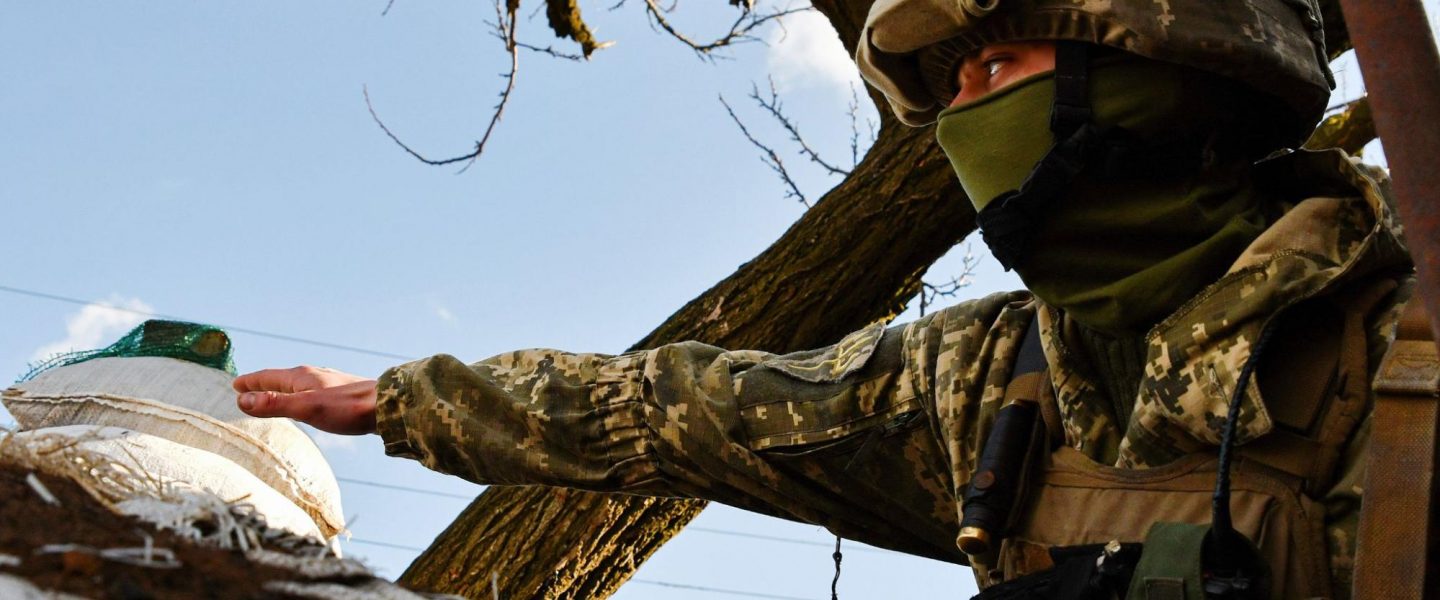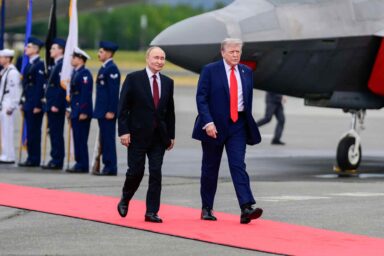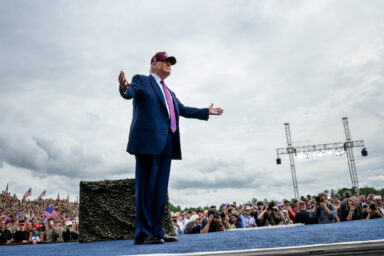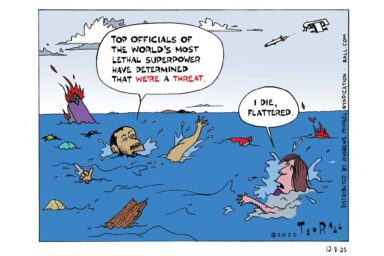A dangerous step with menacing implications
— NEWS ANALYSIS —
Russian President Vladimir Putin’s announcement that he is officially recognizing the independence of two separatist Ukrainian regions and is sending in troops “to maintain order” is ominous, but it is not a definitive declaration of war — at least not quite yet. However, this small step could have implications for the entire world.
The two breakaway regions, the Donetsk People’s Republic and the Luhansk People’s Republic, in southeastern Ukraine, known collectively as the Donbas, have effectively been Moscow-backed satellite states since 2014. That same year, Russia invaded and annexed Crimea after the pro-Russia government of Viktor Yanukovych was overturned by demonstrations that culminated in Ukraine’s so-called Maidan Revolution.
In a remarkable televised address Monday night, Putin declared the notion of Ukrainian statehood itself a fallacy, possibly creating out of thin air a justification to invade and take Kyiv. But so far, Putin has put the Kremlin’s official stamp on what to a large extent was already an accomplished fact. Putin had already recognized Donetsk and Luhansk as independent states when they declared autonomy in 2014. No other nation has so far and, despite the threat from Russian troops, it’s doubtful that any will.
The situation in the Donbas has always been less than clear. As Putin himself noted, Russia’s influence in Ukraine extends back to the time of the czars. The name Donbas refers to the Donets Basin which runs along the Donets River. The region’s coal mines led to a population boom mostly of Russian immigrants throughout the region towards the end of the 18th century. Under the czarist Russian Empire, the Donbas came to be known as Novorossiya (New Russia). Today, the region is still important for its coal mines which reach deep underground, its metallurgy, and heavy industry.
While ethnic Ukrainians populated the Donbas’s rural areas, ethnic Russian immigrants were concentrated in the cities, and they still make up an important part of the industrial workforce. Through much of its history — and particularly lately — the rest of Ukraine has treated the Russian concentration in the region with suspicion and ambivalence.
Following a brief period of independence after the Russian Revolution in 1917, and the ensuing Russian civil war of 1917-1923, Ukraine was incorporated into the Soviet Union as the Ukrainian Soviet Socialist Republic. In the 1991 referendum, more than 80 percent of the citizens in the Donbas region voted for independence from the USSR. By 1993, however, the region was experiencing serious economic difficulties. The coal miners were frequently on strike, and the ethnic Russians, who constitute nearly 40 percent of the region’s population, were beginning to feel crowded out by Ukrainian nationalism and the fact that decisions were made in Kyiv. The rise of powerful and heavily corrupt oligarchs, including Viktor Yanukovych, did not help the situation. While more than half the regional population was Ukrainian, ethnic Russians were still heavily concentrated in the cities and nearly three-fourths of the Donbas considered Russian to be their principal language.
The question now is whether he plans to stop with Donbas or try to take over other areas of Ukraine as well. Are the troops stationed elsewhere merely there to keep Kyiv from objecting to the loss of Donbas, or will he try to swallow the whole country?
Reconciling Ukraine’s ethnic Russians with the rest of the newly independent state’s citizens was never going to be easy, but Putin complicated matters considerably by encouraging the Russian community to revolt and by issuing Russian passports freely to just about anyone who wanted one.
The question now is whether Putin plans to stop with Donbas or try to take over other areas of Ukraine as well. Are the troops stationed elsewhere merely there to keep Kyiv from objecting to the loss of Donbas, or will he try to swallow the whole country?
Tuesday afternoon, President Joe Biden labeled the gambit “the beginning of a Russian invasion” and unveiled tough sanctions. Obviously the White House wants to see if Putin can be stopped from going any further.
From both NATOs and Russia’s perspectives, Ukraine is strategically important — not so much because of Donbas, but because Ukraine’s western border is the gateway to Eastern Europe. The frontier provides access to Romania, Moldova, Slovakia, Hungary, and Poland as well as Belarus. A military threat can move in either direction. If Putin had control of all of Ukraine, he might create problems in those eastern European countries that became part of the Warsaw Pact Eastern bloc following Soviet takeovers after the end of World War II. All the same, it is easy to see why NATO — a military alliance created specifically to isolate Moscow — having open access to Ukraine makes the Kremlin nervous.
Even Ukraine’s economic success and its opening to Western markets — and particularly the European Union — highlights Russia’s own economic problems. And Ukraine’s vibrant intellectual discourse contrasts with the increasingly repressive climate under Putin’s regime.
For the moment, increased sanctions may be the most reasonable Western reaction, but that will not come without a price. Europe is dependent on Russian gas to heat its homes, and if Russia is cut out of the world economy, energy costs will likely skyrocket and that could lead to a global recession.
With a population of only 43 million, Ukraine may seem like a far away tempest in a teapot, but the potential ramifications of that tempest may come as a shock to us all.



